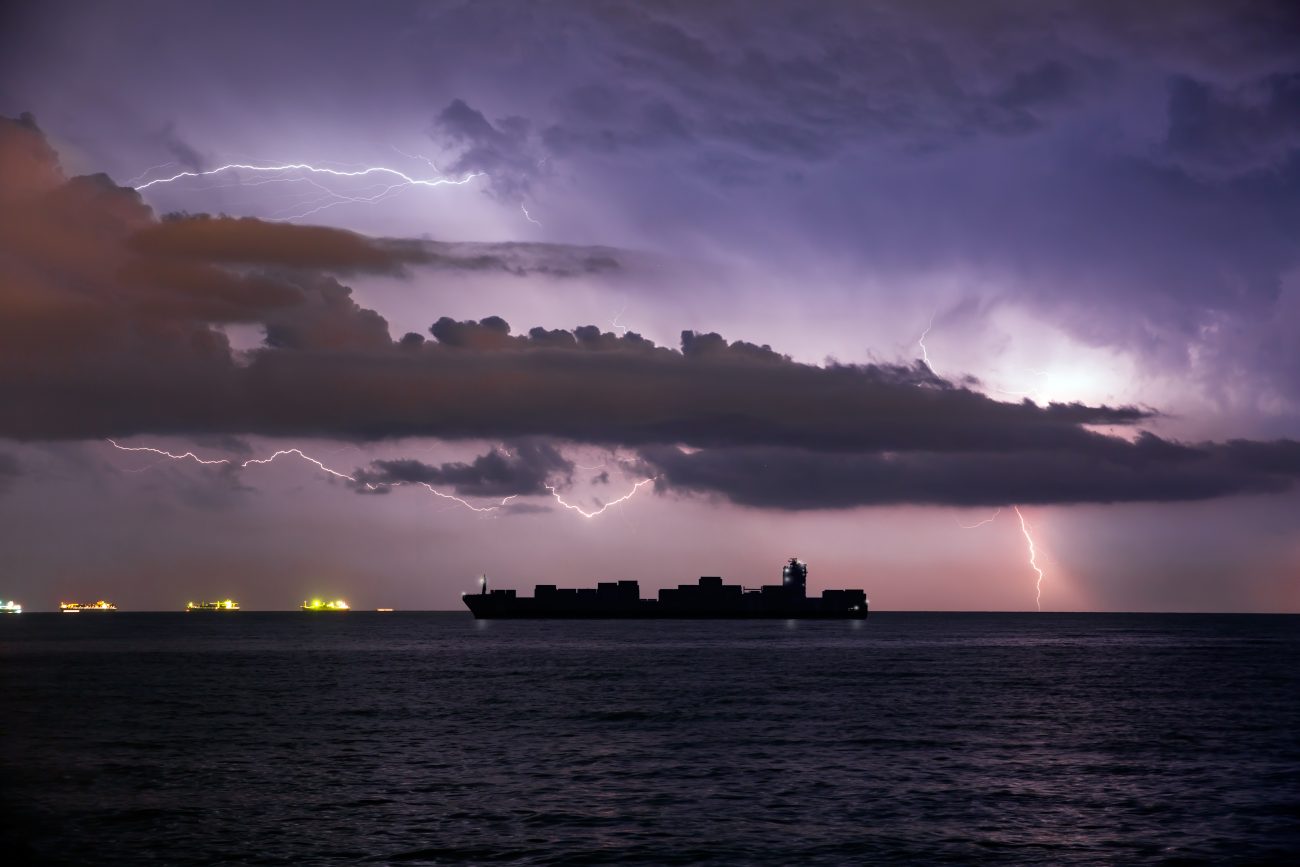When entering the winter season, extreme weather is a common phenomenon and a big storm can knock out even the largest cargo ship. Most modern ships are designed to endure extreme weather and stay on schedule. However, storms that turn into hurricanes, cyclones or typhoons are really dangerous for ships. But sometimes they are an unavoidable part of life at sea. In this blog post, I share my knowledge on how extreme weather conditions affect cargo ships and port operations as well as how we helped our customers when the Port of Rotterdam was hit by recurrent storms.
How extreme weather conditions affect cargo ships and port operations
Extreme weather conditions can have a massive impact on cargo ships and port operations, both in terms of cost and delay. Cargo ships are normally on a very tight schedule and the fuel consumption can be tens of thousands of dollars per day. When hit by a storm, the losses are not only in days of delay but also in huge money loss as time may have to be made up with increased speed. Inevitably this increases the fuel consumption.
A delay will also cause disruption in several steps of the supply chain – from port operations to further transportation of intermodal cargo – affecting the customers in the end. If hit by heavy winds, ports may be unable to operate their cranes, and even have to close down, and extra cargo has to be stored for a longer period of time due to the port’s storm stop.
Some ports may reduce their delay charges and some terminal operators also stop their demurrage and detention clocks when the storm arrives, and start them again once the ports reopen. There is often a negotiation, often based on force majeure, between carriers and terminals after a storm stop. Carriers may pay for storage or they decide to move their cargo to another port.
How do cargo ships deal with extreme weather conditions?
As you can imagine, no crew on a cargo ship wants to find itself in the middle of a storm. Trying to minimize every hour of delay is crucial, and most cargo ships have implemented safety routines and are equipped with computer-based systems for weather routing to avoid extreme weather conditions.
Weather routing system to optimize the voyage plan and avoid storms
The crew onboard a cargo ship is dependent on reliable weather information to navigate through a storm. A century ago, weather updates at sea were limited to Morse code messages based on scarce input. But since the 1980s, direct-printing services were introduced to provide navigational and meteorological warnings and forecasts directly to the ships.
Today, captains also receive weather maps, satellite images, and other information by email. Some cargo ships, such as Evergreen Line, have computer-based weather routing systems installed providing almost real-time weather data in order to optimize the voyage plan.
Cargo loading systems and ballast water ensure hull stability and strength in a storm
When facing a storm at sea, the size and construction of the ship are crucial. Cargo ships are generally designed to be capable of riding out most storms. The heavier the cargo load, the better the protection. An empty ship may be the most dangerous scenario when facing a storm at sea.
To ensure cargo ships’ safety and efficiency when sailing empty or with low cargo volume, they are equipped with computer-based cargo loading and stability systems to adjust the trim, draft, and monitor hull strength. The volume and distribution of the ship’s ballast water are calculated to provide stabilizing weight and ensure the strength of the hull.
How we helped our customers when recurrent storms hit the port
At the beginning of last year, there were three storm stops in the Port of Rotterdam – one of the largest ports in Europe. Port operations stopped for entire days and, this, in combination with a congested terminal, caused heavy delays up to a month after each storm. Unfortunately, it led to dissatisfied customers who didn’t receive their goods on time.
In this case, it was extremely important to keep the customers updated on the situation and quickly investigate possible solutions to solve the problem. One alternative was to continue waiting for the congested cargo to be shipped by regular feeders. Another alternative was to select the most urgent containers and book a third part feeder vessel to get the goods moving. This alternative would require that it was physically possible to reach and pick out these containers among all other containers stacked on the quay. Booking a third part feeder vessel would also mean additional costs.
However, when there are several storm stops and containers are stuck in the port for weeks, the rent the carrier has to pay for storing their containers starts to tic. At some point, they reach a certain cost limit for the delay.
To solve the problem, we had to carefully calculate the most cost-efficient and feasible solution. When the operations started again, we decided that the best thing to do was to book an extra feeder to ship the customers’ cargo to Gothenburg, Sweden, for re-distribution from there. By doing this, we cleared the quayside in Rotterdam, stopped the rent costs, and our customers were happy to finally get their goods moving!
I hope you found this blog post interesting and that it hopefully gave you some new insights. Let us pray for less extreme weather and fewer storm stops this season!
For more info on how we can help you with reliable and sustainable container shipping solutions, contact us on our Greencarrier Liner Agency website.





